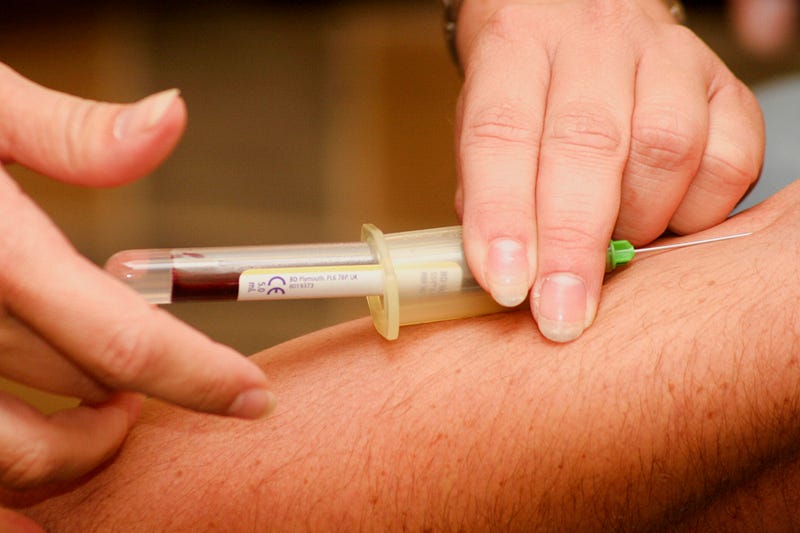A Novel Blood Test for Early Alzheimer's Diagnosis Explored
Written on
Chapter 1: Understanding Alzheimer’s Disease
Despite extensive research over the years, Alzheimer's disease (AD) remains a significant challenge in the medical field. Nevertheless, advancements are being made daily by dedicated scientists.
We have gained insights into the role of amyloid plaques, which accumulate between neurons, and neurofibrillary tangles that form within them. Both of these entities, which are protein aggregates, serve as crucial indicators of AD, though their exact function in the disease's progression is still not fully understood.
AD presents a complex puzzle. As we delve deeper, we uncover numerous issues: the blood-brain barrier deteriorates, oxidative stress increases, mitochondrial function declines, microglial cells sustain damage, serotonin signaling is disrupted, inflammation ensues, and glucose metabolism falters, among other challenges.
Despite our accumulation of knowledge, effective treatments remain elusive. One primary reason is that diagnoses often occur too late; by the time an individual receives a diagnosis, extensive brain damage has already transpired.
Researchers are exploring predictive markers, including specific blood proteins, PET scans, and ocular changes, with machine learning potentially aiding in the early diagnosis of dementia through MRI scans.
Section 1.1: Introducing SOBA
Recent studies suggest a significant advancement in early detection of AD through a blood test known as SOBA.
SOBA, short for soluble oligomer binding assay, is based on a critical element: the misfolded amyloid beta protein that forms AD-related plaques. Initially, these misfolded proteins cluster in smaller groups referred to as oligomers, which can serve as a precursor for larger plaques and may exist for years or even decades before any symptoms of AD manifest.
To identify these oligomers, researchers focused on two key observations:
- Oligomers tend to adopt a distinctive configuration known as an alpha sheet.
- These alpha sheets are inclined to bind with one another.
The SOBA test employs a synthetic alpha sheet to attach to the oligomers found in blood or cerebrospinal fluid samples, thereby confirming their presence.

The research team evaluated SOBA using 379 archived human plasma samples from individuals with varying cognitive conditions: no impairments, mild cognitive impairment, moderate to severe Alzheimer’s, and other dementia types. The results showed that oligomers were detectable in participants with mild cognitive impairment and in those with moderate to severe Alzheimer’s, as well as in individuals from the control group who later developed mild cognitive impairment.
Section 1.2: Efficacy of the SOBA Test
Notably, SOBA demonstrated the ability to differentiate AD from other dementia forms, achieving an impressive sensitivity and specificity of 99% when compared to clinical and neuropathological diagnoses.
Currently, the research team is collaborating with a spinout company, AltPep, to develop SOBA into a practical diagnostic test for oligomers. The underlying principles of this test could also be adapted to identify harmful oligomers related to other conditions, such as Parkinson’s disease and Lewy body dementia.
Chapter 2: The Future of Alzheimer’s Diagnosis
The first video titled "An update on blood tests for Alzheimer's" delves into the advancements in blood testing technology aimed at early detection of Alzheimer's disease, highlighting the potential implications for treatment and patient care.
The second video, "Research shows new blood tests could detect Alzheimer's disease more accurately," explores the evolving landscape of diagnostic methods, emphasizing the significance of blood tests in enhancing diagnostic accuracy.
This proof-of-concept study, though based on a relatively small sample size and retrospective in nature—diagnosing individuals who had already received other diagnoses—could pave the way for a straightforward blood test that would be invaluable for diagnosing and assessing early interventions.
Questions remain: Can we reduce oligomer levels through medication or lifestyle changes? How do these levels correlate with other AD processes? What is the test's predictive accuracy in broader, more diverse populations? What roles do various gene variants play?
Stay tuned for further developments.
Thanks for reading! Feel free to connect with me on Twitter and subscribe to Thinking Ahead for more in-depth explorations of intriguing ideas.